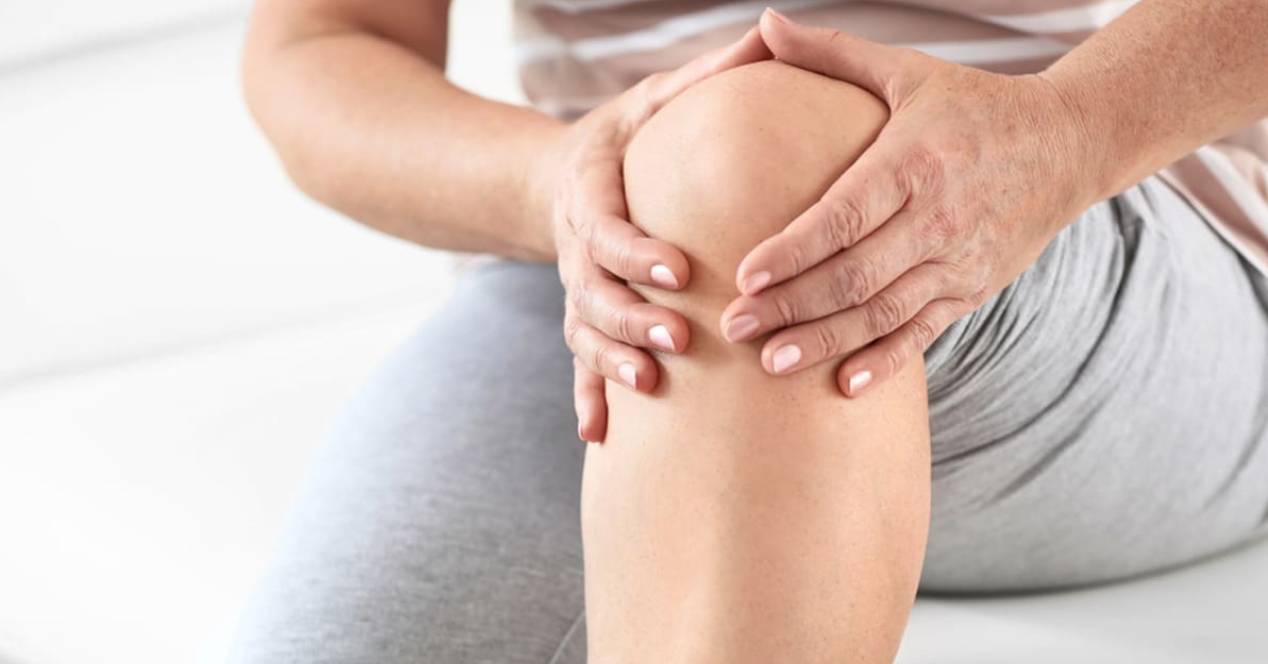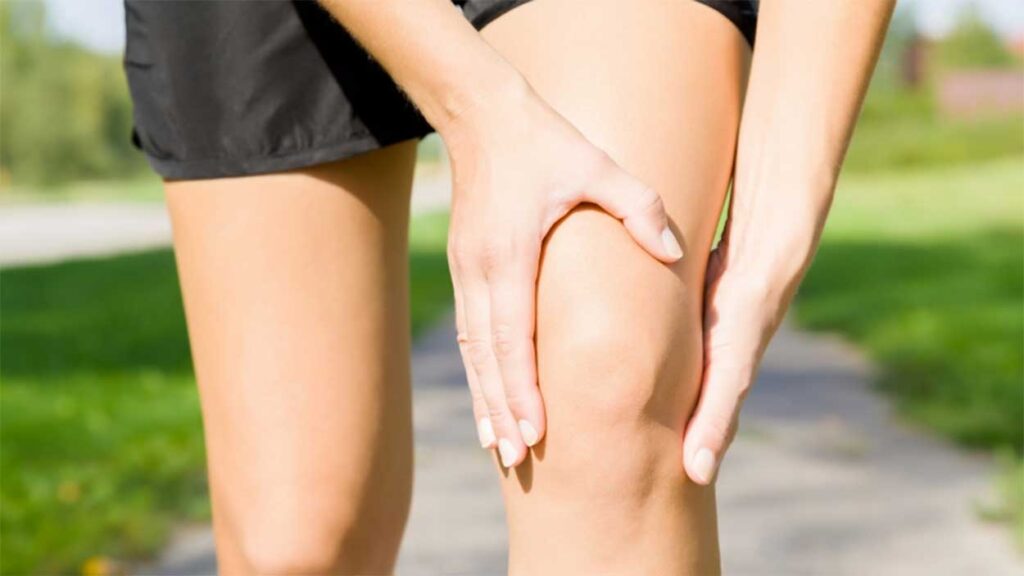
Many athletes suffer pain in the knee cap when doing jumps or explosive movements with the legs. The name of this condition is patellar tendinitis and it directly influences the patellar tendon.
The knee is a joint made up of several parts, which can facilitate injuries for various reasons. If a person experiences pain or discomfort around the knee, it is a good idea to rest and avoid strenuous exercise. Despite it being necessary to see a specialist doctor to find out all the details of the discomfort, below we will reveal the most common causes and symptoms.
What is patellar tendinitis?
This is an injury or inflammation of the tendon that connects the kneecap to the shinbone (tibia). The pain can be mild or severe, depending on the severity of the damage to the joint. Tendons are made of strong tissue and attach muscle to bone. If a person places additional stress on a tendon, small tears in the tissue can develop. This causes inflammation, although the lesion heals quickly. However, repeated stresses can cause tears to develop faster than the body can repair them.
The patellar tendon plays a crucial role in transmitting the forces generated by the muscles of the front of the thigh to the tibia so that the leg can be straightened and support our weight when walking or jumping. This tendon together with the quadriceps, quadriceps tendon, patella, and surrounding tissue ("retinacula") form the extensor mechanism of the knee.
In the case of this injury, patellar tendinitis develops gradually and worsens each time the tendon is overloaded, so it is essential to rest the knee after each injury. Especially to give time for it to fully heal.
Unfortunately, no one is free from it, although it is more common among athletes, especially those who play volleyball and basketball. That is why it is also called jumper's knee It is estimated that around 14 percent of recreational volleyball players suffer from this problem. Although the data is even higher in professional athletes.

What are the main causes?
As we said before, this injury is due to repetitive stress on the knee, most often due to overuse in sports or exercise. Repetitive stress on the knee creates small tears in the tendon that, over time, inflame and weaken the tendon. Athletes are at higher risk because running, jumping, and squatting place more force on the patellar tendon. For example, running can generate a force of up to five times our body weight on the knees.
Also, doing long periods of intense training is associated with jumper's knee. On the other hand, the condition is more common in adolescents and people in their 20s and 30s. People who are taller and heavier may be at higher risk, as more weight can put more pressure on the knees.
The most common factors can be:
- Tight leg muscles
- Uneven leg muscle strength
- Misaligned feet, ankles, and legs
- Obesity
- Slippers without enough padding
- hard training surfaces
- Chronic diseases that weaken the tendon
Symptoms of patellar tendonitis
Pain and tenderness at the base of the kneecap are often the first symptoms of patellar tendon injury. There may also be some swelling and burning sensation in the kneecap. You will even notice a Intense pain when we get on our knees or perform a squat. Jumping, running, and hitting the ground are likely to make the pain worse.
At first, the pain may be sporadic and appear only after sports activity or exercise. As the tendon becomes more damaged, the pain can get progressively worse. It is not only a problem with physical activity, but also influences everyday life, such as climbing stairs or driving.
When the leg is straight, the area below the knee can feel sensitive by touching it. You may also feel tense or stiff, especially first thing in the morning. A large tear of the patella tendon is a serious injury and a complete tear will separate the tendon from the patella. You may hear a ripping or popping sound and feel significant pain.

How is tendon injury diagnosed?
When we go to a doctor, the specialist will ask questions about the physical activity we do, the symptoms we are experiencing, the frequency of the symptoms and if we have tried any remedy to relieve the pain. The doctor will physically examine the knee joint to find out where the pain is felt. He will also try the range of motion knee bending and extending the leg.
On the other hand, it is possible to order imaging tests to look at the patella and tendon, and thus determine if there is any damage to the tendon or bone. These tests can also help rule out other possible causes of the pain, such as a fracture.
The most common tests for this type of injury are:
- Bone scan to look at the bone and determine if the patella is fractured or displaced.
- Resonance MRI scan to look at the tendon and show any soft tissue damage.
- Ultrasound to look at the tendon and show any soft tissue damage.
Treatment for patellar tendinitis
Treatment depends on the severity of the injury. The most common recommendations to reduce pain is to rest the leg and stretch and strengthen the muscles. Your doctor will recommend a period of controlled rest, in which activity that exerts force on the knee will be avoided.
Further treatment will depend on the injury, the person's age, and activity level. Small or partial tears can often be treated with rest and gentle exercise. A doctor may suggest wearing a knee brace to keep the knee straight and help the tendon heal. Physical therapy can help gradually restore movement as the tendon improves.
Medicine
A doctor can prescribe over-the-counter medications to reduce pain and inflammation in the short term. Some examples may be ibuprofen, sodium naproxen, and acetaminophen. However, until a doctor assesses the severity, do not take medication on your own.
If your pain is severe, a doctor may give an injection of corticosteroids in the area surrounding the patellar tendon. This is more effective in reducing severe pain. However, it can also weaken the tendon and make it more prone to tearing. Therefore, it is important to think hard about this treatment and its associated risks.
Another way to deliver corticosteroids is by spreading the medication over the knee and using a low electrical charge to push it through the skin. This type of therapy is called iontophoresis.
Physiotherapy for patellar tendinitis
The goal of physical therapy is to reduce pain and inflammation and to stretch and strengthen the muscles of the legs and thighs. If the pain is severe even when you rest your legs, your doctor may recommend wearing a brace and crutches for a while to prevent further damage to the tendon. When you are relatively free of pain, you can start physical therapy sessions.
A therapy session typically consists of a warm-up period, ice or knee massage, stretching and strengthening exercises.
Your therapist can also use ultrasound and electrical stimulation to relieve knee pain. A knee pad or a bandage on the joint can help reduce pain when you exercise.
Alternative treatments
A relatively new treatment is a plasma injection rich in platelets This uses a concentration of platelets from your own blood to cause tendon healing. This is not the only treatment that is under investigation. It is also often used:
- ultrasound guided dry needling: This therapy makes small holes in the tendon. This is called dry needle fenestration and has been found to relieve pain and aid healing.
- injections with polidocanol: it has as a priority to break new blood vessels in the tendon, which are associated with pain.
- Ultrasound-guided high-volume injections: This is also aimed at breaking up new blood vessels in the tendon.
- Thermotherapy hyperthermia: uses deep tissue heating along with a cooling device on the surface of the skin to relieve pain.
- wave therapy extracorporeal shock therapy: has been shown to reduce pain for up to two years.